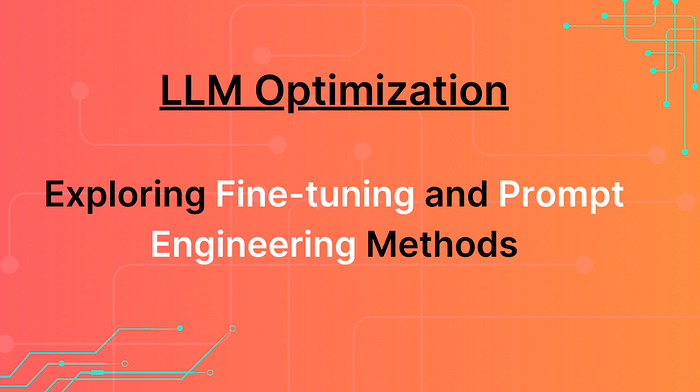Optimizing LLMs: LoRA, QLoRA, SFT, PEFT, and OPD Explained
Introduction
Large Language Models (LLMs) like GPT, LLaMA, and Claude have revolutionized natural language processing. However, training and fine-tuning them remains resource-intensive. To tackle this, researchers and developers have introduced efficient optimization techniques that drastically reduce the computational and memory requirements—without compromising model performance.
This blog explores five major techniques: LoRA, QLoRA, SFT, PEFT, and OPD—demystifying how they work, where they fit in, and when to use each.
1. Supervised Fine-Tuning (SFT)
What it is:
Supervised Fine-Tuning is the traditional method of training a pre-trained LLM on a labeled dataset. It involves updating all model parameters to align the LLM's responses with task-specific objectives.
Use Case:
Best used when you have:
-
High-quality labeled data
-
Access to large-scale compute
-
Need for full model control
Limitations:
-
Extremely resource-heavy (requires full GPU memory)
-
Not suitable for frequent retraining or smaller organizations
2. Low-Rank Adaptation (LoRA)
What it is:
LoRA stands for Low-Rank Adaptation. Instead of updating all parameters, LoRA injects small trainable matrices into the transformer layers. Only these matrices are trained, while the rest of the model remains frozen.
Why it matters:
-
Dramatically reduces GPU memory requirements
-
Allows fast, targeted fine-tuning
-
Enables training multiple task-specific adapters without duplicating the full model
Use Case:
Ideal for domain adaptation (e.g., legal, medical, customer service) using a single base model.
3. Quantized LoRA (QLoRA)
What it is:
QLoRA combines quantization and LoRA. It quantizes the base model (e.g., to 4-bit), and applies LoRA on top. This further compresses memory usage while retaining LoRA’s fine-tuning efficiency.
How it works:
-
Base model weights are stored in quantized (int4) format
-
LoRA adapters are in higher precision (e.g., float16)
-
Uses paged optimizers and double quantization for performance gains
Why use QLoRA:
-
Can fine-tune large models (like 65B) on consumer-grade GPUs
-
Retains performance close to full-precision models
Use Case:
Open-source fine-tuning projects, startups without high-end GPUs, academic research
4. Parameter-Efficient Fine-Tuning (PEFT)
What it is:
PEFT is an umbrella term for all techniques that reduce the number of trainable parameters during model fine-tuning. LoRA and QLoRA are types of PEFT.
Variants include:
-
LoRA
-
Prefix Tuning
-
Adapter Layers
-
Prompt Tuning
Why PEFT matters:
-
Reduces training cost
-
Speeds up deployment
-
Simplifies multi-domain fine-tuning (via adapters)
Use Case:
Any situation where compute is limited or you want to serve different model versions efficiently.
5. Optimal Parameter Decoupling (OPD)
What it is:
OPD is a more recent technique that aims to decouple parameters into core and task-specific groups. Instead of altering the full model or even adding adapters, OPD strategically isolates parameters critical for generalization vs. specialization.
Why it’s unique:
-
Maintains core model performance
-
Enables more controlled and explainable tuning
-
Useful for complex multi-task LLM deployments
Use Case:
Multi-agent systems, production-grade LLM APIs requiring model explainability and robustness
Summary Table
| Technique | Trainable Params | GPU Friendly | Use Case | Type |
|---|---|---|---|---|
| SFT | 100% | NO | Full control, robust data | Full Fine-Tuning |
| LoRA | <1% | YES |
Domain adaptation
|
PEFT |
| QLoRA | <1% + Quantization | YES |
Low-resource tuning
|
PEFT + Quantization |
| PFT | Varies | YES |
Efficient deployment
|
Category |
| OPD | Selected layers | YES | Multi-task, explainable systems | Research |
When to Use What?
-
Use SFT when you have resources and require complete control over the model.
-
Use LoRA when you need domain-specific tuning without GPU overload.
-
Use QLoRA for large models on limited hardware (like Colab or RTX 3090).
-
Use PEFT when serving multiple tasks or domains without retraining from scratch.
-
Use OPD for advanced, production-grade systems requiring performance stability and decoupling.
Final Thoughts
LLM optimization is no longer optional—it’s essential. Whether you’re a solo developer or an enterprise AI engineer, understanding these techniques allows you to build faster, cheaper, and smarter solutions. Tools like Hugging Face’s PEFT library, bitsandbytes for quantization, and LangChain integrations make these strategies easier to implement than ever before.
If you’re building or deploying LLMs at scale, these techniques will define your success.
